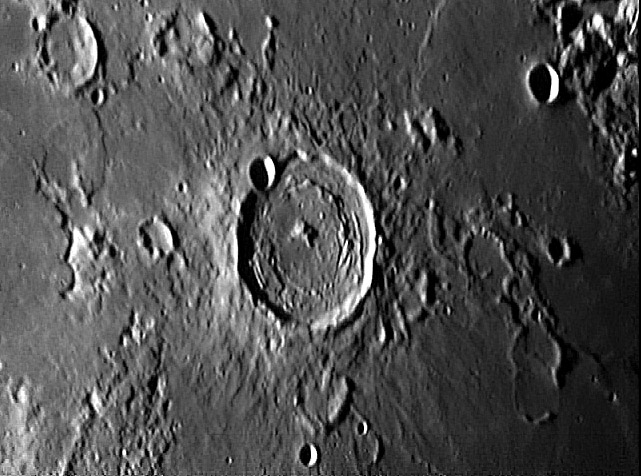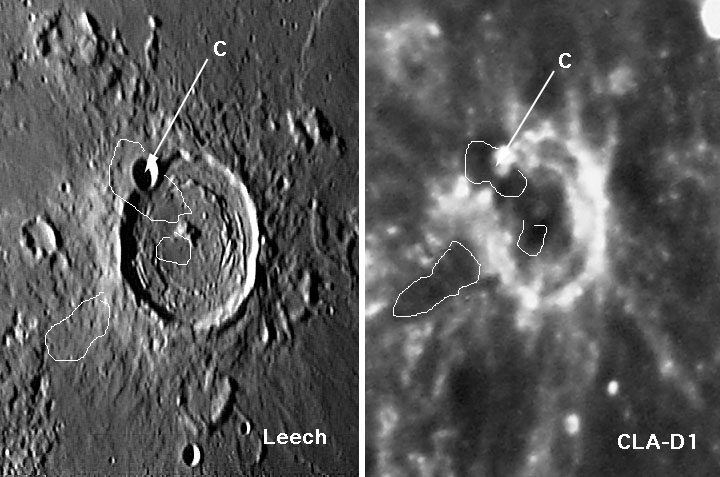
image by Tom Leech
This is a repeat of the Sept 6, 2004 LPOD. Are there newer images of Taruntius?
Taruntius is an often overlooked crater. There are few photos of it by amateurs or spacecraft. This great image by Tom Leech shows what we have been missing. The 58 km wide crater is the same diameter as the much more familiar Erastothenes, but is only 1.1 km deep compared to the latter’s 3.4 km depth. Whereas Eratosthenes has a broad inner wall of terraces, Taruntius has almost none. Taruntius’ central peak is relatively small, and Erathosthenes’ is broad and complex. These differences between two relatively young and originally similar impact craters imply that Taruntius has been altered by the rise of mare under it. Like Atlas, Taruntius is a floor-fractured crater. Taruntius has a strong inner ridge ring - the tops of terraces displaced from the crater wall? - and delicate concentric rilles visible on a Lunar Orbiter I image. What is visible under high sun (below) are patches of dark material south of the central peak and near the north rim. Tom’s image just reveals the tiny volcanic explosion crater that was the source of the southern ash deposit. The northern vent may be the elongated crater south of Taruntius C (Cameron). The full Moon view also shows that plumes of ash fell outside the north rim, and also west of Taruntius. Both Tom’s image and the Lunar Orbiter I photo show ejecta from Taruntius on the nearby Mare Fecunditatis, and Taruntius also has a faint ray system. Based on its rays, Taruntius is considered Copernican in age, meaning younger than 1 billion years. This means that the mare lavas that uplifted its floor and exploded onto its surface were very young since most mare basalts are 3.5 to 2.5 b.y. old.
Technical Details:
Aug 31, 2004. Celestron C-14, Pentax 6×7, 1.4x teleconverter, Toucam 740k, k3ccdtools, Registax.
Related Links:
Rükl chart 37
Great Lunar Orbiter I view
You can support LPOD when you buy ANY book from Amazon thru LPOD!
COMMENTS?
Register, and click on the Discussion tab at the top of the page.




